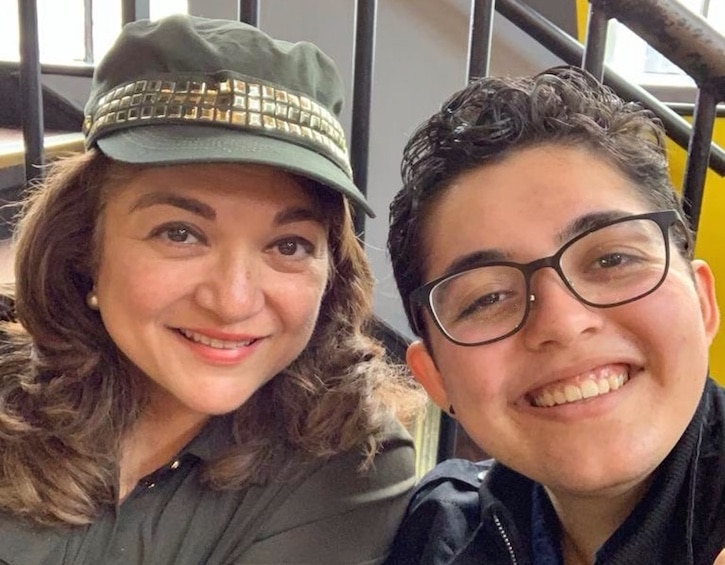
 Post Category - ParentingParenting - Post Category - Older KidsOlder Kids
Post Category - ParentingParenting - Post Category - Older KidsOlder KidsA mama in Singapore shares her story about parenting her transgender child
While transgender awareness has certainly heightened in recent years – from demonstrations of parent support going viral; to the increasingly widespread use of gender neutral pronouns; to popular shows like Pose, RuPaul’s Drag Race and Transparent – controversy abounds when it comes to topics like gender-neutral bathrooms and serving in the military. As parents, we’ve watched as ideas of gender identity have become more prominent amongst children – wondering both how to talk openly and honestly to our children about gender identity and sexuality, as well as how to best support our children’s choices.
Read more: Meet Singapore Transgender Activist June Chua
British mama Sunita Shahdadpuri, a Singapore Permanent Resident, experienced this first hand when her child, a university student in the U.S., came out to her as transgender in the fall of 2017. While she was able to find some helpful resources in the United States and attended a family support meeting through PFLAG, she felt there were no similar support systems in place for families in Singapore. So, earlier this year she created SEFTY (Singapore Expat Families of Transgender Youth – note that Singaporean families are more than welcome, too!) to connect with and support other families in Singapore whose children identify as transgender.
We caught up with Sunita to learn more about her family’s journey, as well as any advice she has for other parents with transgender children. We are so grateful to Sunita and her child, Aydan, for sharing their story with us.

How did you come to be involved with this issue?
This is all fairly new for me, as my child came out to me in October 2017. After the initial shock, I did a lot of research – reading articles online and scouring forums as well as watching vlogs to educate myself. I learnt how critical it is for your child to feel validated. Family rejection can trigger depression and other mental health problems, and sometimes even homelessness or suicide.
On the other hand, family acceptance creates greater self-esteem, social support and improved health for trans youth. I wanted to support my child the best I could, and after attending a support group in New York and finding it hugely beneficial, I decided to start something similar in Singapore. I call it SEFTY (Singapore Expat Families of Transgender Youth), and hope to offer support to other parents with children who identify as transgender.
You’ve mentioned that your child came out as transgender while at university in the U.S.; how was your child’s experience at school here in Singapore? Did they feel supported?
My child told me they were gay at the age of 14, while they were still in high school at UWCSEA in Singapore. UWCSEA is a very inclusive school and they are great about diversity and making everyone feel comfortable in their skin. My child had a fantastic experience at school.
It was in their second year of college in New York that they came out as transgender. The college is incredibly supportive of their trans students, with gender-neutral bathrooms and the usage of everyone’s preferred pronouns, etc.
You mentioned that it took some time to come to terms with the change in your child’s status; what was this process like for you? Can you talk us through your feelings?
Any change takes time to get used to. I raised my child as a girl for 19 years, and now I’m learning to embrace the new person they are transitioning into. While it can never change how much I love them, there were emotions to go through to get to the stage I’m at now.
I would look at an old photo and feel a twinge of sadness that the little girl laughing in the picture, standing on a park bench with her mass of beautiful brown curls, is no more. But then I study a recent photo; their short locks still have the curls, their hand rests comfortably in a suit vest pocket and their smile is as sunny as ever. My child will always be my child, and if this transition is necessary for them to be happy, then there is no way I won’t support it.

You mentioned attending a PFLAG meeting for families in the U.S., what does this organization do? How did you get hooked up with them?
I didn’t find the type of support group I was looking for in Singapore, so as I was planning a trip to New York, I researched for support groups there, and found PFLAG, which is a nationwide organisation offering support to parents and friends of LGBTQ communities. There is a separate group within PFLAG that specifically does support groups for transgender families. I attended a meeting with my child, and was so grateful for all the connections made. Sitting around in a circle and listening to other parents talk about their experiences was so comforting because it reinforced that I was not in this alone.
What were your main learnings from PFLAG that you have tried to carry over to SEFTY?
I realised that nobody has to have all the answers. We’re all on a journey together and the simple act of meeting and sharing our experiences at these support groups was so reassuring.
Being in a room filled with parents at different stages of their child’s transition was invaluable. One parent in particular, moved me to tears with his sharing. He said that all the confusion and anxiety he had felt about his child’s transition and subsequent gender-affirming surgery, was dispelled the day he walked past the bathroom and heard his child singing in the shower – a sign that they were finally happy with their body. It was a very special moment.
Since starting SEFTY have you connected with other parents in Singapore with transgender kids?
I posted about SEFTY on a Singapore Expat Facebook group I’m a member of, and had an overwhelming response from women who applauded me for supporting my transgender child, and for wanting to help other parents in a similar situation. Since the post, four women have emailed me saying they have a child who identifies as transgender and would like to meet up. I am also working with UWCSEA’s two campuses on starting a parents’ LGBTQ support group.
Since becoming more familiar with this issue, what have you learned? What advice do you have for parents who are trying to support their kids who have either come out, or are in the process of coming out?
Transgender people often feel a disconnect between the sex assigned to them at birth and how they feel on the inside. This is known as gender dysphoria and it’s painful and distressing. It is not a phase or something that can be changed, and parents who try to dismiss it can cause a lot of harm at a time when the child desperately needs support and validation. Some ways to show support are to educate oneself about the concerns facing transgender youth, and to always use the child’s preferred gender pronouns and preferred name.
One of the things that helped me the most, was reintroducing my child to my family and friends and making them aware of their new name and identity. Keeping it a secret because of fear of how others will react causes a lot of stress, while being honest and open frees you and sends the best possible message to your child – that you are unapologetically proud of them and will always stand by them.
![]()
Thank you so much for sharing your story, Sunita. If you’re in Singapore and would like to learn more about SEFTY, you can email [email protected].
Click the following link for a list of other transgender resources in Singapore, including support groups and information on counselling for individuals, couples and families. Finally, visit the Human Rights Campaign for a robust list of online resources, including more information about transgender and gender expansive children, and resources for people with transgender family members.
Read more: The T Project’s June Chua on Growing Up Transgender in Singapore






 View All
View All





 View All
View All








 View All
View All








